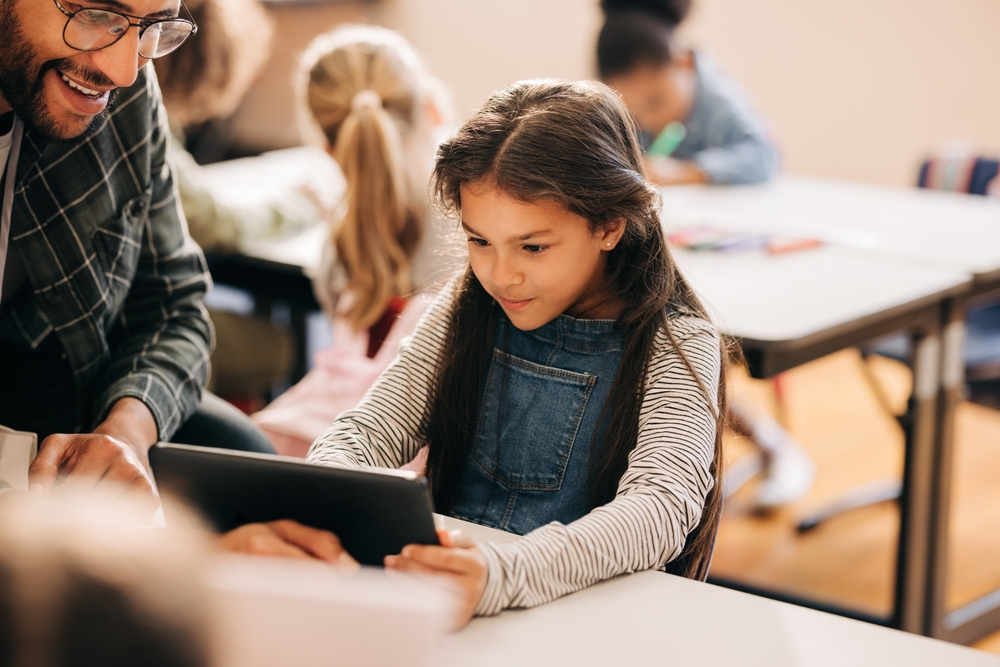
As the world rapidly evolves, our young generation is constantly tasked with navigating an increasingly complex social and intellectual landscape. A critical tool that can equip them to meet these challenges head-on is the gift of literacy, and children’s literacy programs play an indispensable role in this endeavor.
Children’s literacy programs are a cornerstone in providing a solid foundation for the cognitive development of young individuals, shaping their futures by inculcating essential reading and writing skills. By engaging children in rigorous, interactive, and fun-filled reading and writing activities, such programs foster not just literacy skills but a lifelong love for learning.
The power of these programs runs much deeper than simply learning to decode letters and words. They assist in nurturing the child’s imagination, enhancing their vocabulary, and developing critical thinking skills. These are indispensable assets that empower children to understand and engage with their environment more effectively. Furthermore, these literacy programs can aid in building self-confidence and promoting better communication – adding new perspectives, and growing the ability to express thoughts, experiences, and emotions effectively.
Beyond the individual benefits, children’s literacy programs also play a critical role in forging a better society. As children gain a wider perspective through reading and writing, they develop empathy and appreciation for different viewpoints, helping to create a more tolerant and understanding society.
To summarize, children’s literacy programs are much more than mere educational tools – they are transformative life skills that can unlock the potential of our younger generation. As parents, educators, and policymakers, it’s crucial that we acknowledge the power of these programs and explore opportunities to ensure their accessibility for all children.
This examination of the topic is set to delve into the nuances of children’s literacy programs, highlighting their importance and offering insights into their effective implementation in fostering a successful future for our children.
An In-depth Look at Children’s Literacy
Children’s literacy is a term that encompasses the proficient and correct understanding and application of language. It covers a wide spectrum, including reading and writing skills, comprehension abilities, and interpretation of texts, which are pivotal in the process of learning. A child’s literacy development paves the path for cognitive growth, creativity, and academic achievement, thereby playing a significant role in their life.
Why is Children’s Literacy Significant?
The importance of children’s literacy cannot be understated. At its core, literacy acts as a fundamental cornerstone in a child’s educational journey, empowering them to absorb and interpret information accurately. This capacity lays the groundwork for a child’s future academic success, enabling them to progress and reach their full intellectual potential.
Moreover, literacy imparts a sense of autonomy in children, enabling them to explore and learn independently. This independence can boost their confidence and nurture a love for learning. Children who can handle texts on their own are better able to understand complex concepts, articulate ideas, and engage in critical thinking – skills that will serve them well as they transition from school to the wider world.
Furthermore, literacy plays an equal role in a child’s social and emotional development. As children come across various characters and situations in stories, they learn about different perspectives and begin to reflect on their own thoughts and feelings. This exposure expands their worldview and fosters empathy, adding depth to their personality.
Children’s Literacy: A Launchpad for Opportunities
The mastery of literacy in childhood opens doors to a plethora of opportunities. Literate children can easily navigate the realm of knowledge, learning about an array of subjects and understanding diverse viewpoints. As they grow, they can ask informed questions, pursue their interests, and keep expanding their horizons.
Literacy also goes hand in hand with effective communication. The ability to write effectively equips children with a way to eloquently express their thoughts, stories, and emotions. This skill aids them not only academically but also in developing strong relationships and, later, succeeding in their professional lives.

Stages of Children’s Literacy Development
Understanding the stages of children’s literacy development is the cornerstone to fostering a love of reading and writing in children. It helps educators and parents alike to provide age-appropriate learning materials and adjust teaching methods accordingly.
1. Pre-Literacy Stage (Birth to Age 2)
In this foundational stage, children learn from their surroundings. They begin to associate sounds with words and familiar objects. Reading aloud to babies and toddlers supports language acquisition and cognitive development. They start to recognize pictures in books and mimic speech patterns, which are preliminary signs of literacy development.
2. Emergent Literacy Stage (Ages 2-4)
At this stage, kids move beyond mere recognition to start connecting sounds with letters and forming short words. They may write letters or pretend to read books, which are tell-tale signs of budding literacy. Interactive activities like alphabet games fortify this process.
3. Early Literacy Stage (Ages 4-7)
This stage sees children reading simple sentences and writing short phrases. Phonics plays a crucial role here as kids learn to decode words by sounding them out. Continuous practice helps children read fluently and develop basic spelling skills.
4. Transitional Literacy Stage (Ages 7-9)
At this critical juncture, children transition from learning-to-read to reading-to-learn. Their vocabulary expands significantly, and they can read and understand complex sentences. Writing skills evolve, too, with kids now capable of composing short, structured paragraphs.
5. Competent Literacy Stage (Ages 9 and above)
This final stage is where kids become proficient readers and writers. They can understand and digest information from diverse sources, critically analyze texts, and express themselves effectively through written communication.
These stages are not strictly sequential; every child’s literacy trajectory is unique. However, they serve as a useful guide for creating targeted literacy programs that progressively enhance children’s reading and writing abilities.
Significance of Children’s Literacy Skills
When discussing ‘children’s literacy skills,’ it’s worth noting that these skills are not singular nor monolithic. Instead, they’re a diverse set of abilities children acquire over time, enabling them to process written information, decode text, and express themselves more competently. These skills form the bedrock of a child’s cognitive, social, and emotional development, and have a significant impact on their schooling and future success.
A. Types of Children’s Literacy Skills
- Pre-reading Skills: Before children can read, they first learn to understand language. This involves recognizing sounds, developing vocabulary, and understanding simple sentence structures. These pre-reading skills are crucial for children to grasp the basics of language and text.
- Reading Skills: Reading skills involve recognizing letters, understanding phonics, and eventually progressing to fluently reading sentences and paragraphs. They also extend to comprehending text, drawing meaning from it, and making connections between different pieces of information.
- Writing Skills: Writing skills begin with learning to write individual letters and numbers. They progress to constructing sentences, paragraphs, and eventually, full stories or essays. Good writing skills allow children to communicate effectively, express their thoughts, and create coherent narratives.
- Critical Thinking: Reading and writing are closely linked to the development of critical thinking skills. Being literate allows children to analyze texts, evaluate different viewpoints, and form their own opinions. These skills are essential for independent learning and thought.
B. Why are Children’s Literacy Skills Crucial?
- Cognitive Development: Literacy skills are closely tied to cognitive development. They form the foundation for more complex thinking and problem-solving abilities. Additionally, a strong grasp of language can significantly enhance memory and concentration.
- Academic Achievement: Proficiency in reading and writing is a predictor of academic success. These skills enable children to comprehend and engage with school materials effectively, leading to a better understanding of the curriculum and higher marks in assessments.
- Social and Emotional Development: Literacy skills also play a pivotal role in a child’s social and emotional development. Reading richly diverse narratives can help children understand different perspectives, promoting empathy. Additionally, writing allows kids to articulate their thoughts and emotions more effectively, fostering emotional intelligence.
- Future Prospects: Children with strong literacy skills are more likely to graduate from high school, pursue higher education, and secure gainful employment in the future. Literacy is thus a crucial stepping stone to lifelong success.

The Transformative Impact of Children’s Literacy Programs
The power and influence of children’s literacy programs cannot be overstated. These programs play a transformative role in a child’s life, nourishing their intellectual growth, enhancing their cognitive abilities, and driving their holistic development. Facilitating a child’s journey towards literacy, these programs are pivotal elements in the literacy development process.
Let’s delve into the myriad ways these programs can change a child’s life:
- Promoting Cognitive Development: Children’s literacy programs are skillfully designed to encourage cognitive development. They introduce children to an array of words and concepts that enhance their comprehension skills, enrich their vocabulary, and instill a deep appreciation for language. This cognitive acceleration can significantly improve their academic performance and future professional prospects.
- Building Confidence: Literacy programs are highly effective in boosting a child’s self-esteem and confidence. When children read and write successfully, they experience a sense of accomplishment that fuels their motivation to learn more. As they conquer one linguistic challenge after another, they grow in confidence, which spills over into other areas of their lives.
- Developing Social Skills: During literacy programs, children interact with their peers and mentors. This interaction helps inculcate crucial social skills such as teamwork, communication, empathy, and respect for diverse perspectives. They learn the value of collaborative learning and the importance of mutual respect.
- Cultivating a Love for Learning: The immersive, engaging, and fun-filled environment of literacy programs can instill a lifelong love for learning in children. The program’s interactive activities, exciting storylines, and visually appealing content generate interest and curiosity, making children eager to learn and explore more.
- Providing Equal Opportunities: Children’s literacy programs also play a significant role in bridging the educational gap among children from different socio-economic backgrounds. By offering free or affordable resources, these programs ensure that every child, irrespective of their circumstances, has the opportunity to develop strong literacy skills.
- Fostering Critical Thinking: Literacy programs often incorporate activities that require children to think critically. This process hones their analytical and reasoning ability, empowering them to make informed decisions in the future.
The role of literacy programs goes beyond teaching children to read and write. These programs are instrumental in shaping a child’s intellectual and social growth, fostering in them a sense of self-confidence, and equipping them with the tools to navigate their world confidently and independently.
Investing in children’s literacy programs is investing in the future of our society. By fostering literacy from a young age, we are ensuring a future generation of thinkers, leaders, and creators who have the competence to shape the world.
Some successful children’s literacy programs worth noting are Reading Is Fundamental, Reach Out and Read, and Book Aid International. These programs have had a profound impact on children’s literacy, inspiring millions of young minds worldwide.
Transforming Lives: Success Stories from Children’s Literacy Programs
The power of children’s literacy is not just theoretical. It has real-world, life-changing impacts. Let’s delve deeper into some compelling success stories from children’s literacy programs that corroborate the significant influence these initiatives can have.
1. The Turning Point: Jacob’s Story
Jacob, a student from a low-income community, had faced significant learning challenges due to a lack of necessary resources at his school. His learning struggles were particularly pronounced when it came to reading and writing. However, that changed when his district introduced a funded literacy program. With engaging books, interactive activities, and personalized instruction, Jacob began to show remarkable improvement. Today, he’s an excellent reader and writer, demonstrating the immense potential in every child to flourish if given the right tools and guidance.
2. Breakthroughs with Becky
Becky, who was born with hearing impairment, was always ridiculed for her inability to keep up with her peers, leading to her losing interest in academics. A specialized literacy program, however, gave her the confidence she lacked. With specialized tools and methods designed to assist her, she began to read and write effectively. Her story marks the inclusivity and effectiveness of these literacy programs, touching lives, breaking barriers, and creating opportunities.
3. Resilience and Results: The Tale of Brian and Amy
The stories of Brian and Amy serve as a testament to the transformative power of literacy programs. Brian was a high school dropout, while Amy was struggling with dyslexia. Thanks to an adult literacy initiative, they earned their GED and found jobs to support their families. Now, they’re committed to ensuring their children grow up with strong literacy skills to equip them for a successful future.
4. Scaling New Heights: Maria’s Journey
Maria, a first-generation immigrant, faced an uphill battle with adjusting to a new language and culture. A local literacy program was her lifeline, helping her master English and feel more integrated into her new community. Today, she’s a confident English speaker, reader, and writer, emphasizing how these programs can help immigrants feel more at home in foreign lands.
These stories underline the profound impact that literacy programs can have on children and their families. They epitomize resilience, progress, and the sheer transformative potential literacy programs. They bring to life the opportunities that literacy can unlock, and the roles they play in shaping successful futures – not just for children, but for their communities as well.
Conclusion
The criticality of children’s literacy cannot be overstated. It is the primary arbiter of a child’s academic growth, personal development, and future success. Children’s literacy is not just about decoding words or writing sentences. It’s a multifaceted skill that acts as a gateway to a world brimming with knowledge, fostering a deep-seated understanding and appreciation for diverse perspectives, cultures, and ideas.
The Power of Children’s Literacy: More Than Just Reading and Writing
Children’s literacy is a cornerstone of personal empowerment. It amplifies the voices of young minds, allowing them to articulate their stories, emotions, and ideas. It allows children to explore their identities, thus building their self-esteem and equipping them with robust communication skills that are invaluable in school, employment, and personal relationship contexts.
Moreover, literacy nurtures empathy among children. Through reading and writing about different characters’ experiences and situations, children gain insights into the world beyond their own, helping to foster understanding and compassion.
The Impact of Children’s Literacy Programs
Academic Success: Children’s literacy programs play a critical role in academic achievement. By focusing on the development of reading and writing skills, these programs enable children to grasp classroom content better, leading to improved academic performance and a heightened love for learning.
Personal Development: Literacy programs provide a platform for children to express themselves freely. They serve as safe spaces where children can explore different ideas and unleash their creativity, contributing to their personal and social development.
Future Opportunities: Literacy programs significantly contribute to children’s future success. They equip children with vital skills that open doors to various opportunities as they grow, preparing them for a bright and successful future.
Children’s literacy programs are crucial in imparting the necessary literacy skills to children. They are critical in paving the way to success, providing them with the tools they need to navigate the world, express their thoughts and feelings, understand others, and ultimately, thrive in an increasingly complex world.
In conclusion, investing in children’s literacy and children’s literacy programs is paramount. It’s an investment in our children’s future and, by extension, the future of our society. Let us capitalize on the power of literacy to transform our children’s lives, fuel their curiosity, and kindle the spark of lifelong learning.
FAQ’s
What is the importance of children’s literacy in their overall development?
Children’s literacy is a fundamental aspect of their overall development. It equips them with essential skills for processing and understanding information, thus paving the way for their personal growth and educational success. Good literacy can open up a world of opportunities for children, letting them explore new knowledge areas and enhancing their confidence.
What are the different stages of children’s literacy development?
Children’s literacy development occurs in stages, each with its own significance. Initial stages involve gaining familiarity with letters and their sounds, progressing to word recognition, reading fluency, and comprehension. Understanding these stages can be beneficial to tailor appropriate learning strategies and ensure healthy literacy development.
What are the types of children’s literacy skills and their significance in a child’s development and schooling?
Children’s literacy skills encompass a range of abilities such as reading, writing, comprehension, and communication. These skills play a fundamental role in a child’s development, fostering creativity, critical thinking, and problem-solving abilities. Moreover, they serve as the foundation for learning in school, influencing academic performance and future educational outcomes.
How do children’s literacy programs contribute to a child’s literacy development?
Children’s literacy programs are designed to support and enhance children’s literacy skills. They provide structured learning environments, use effective strategies for teaching reading and writing, and foster an enthusiasm for learning. By participating in these programs, children can improve their literacy skills, gain self-confidence, and increase their chances of academic success. These programs can be transformative, as evidenced by several success stories.

 Español
Español